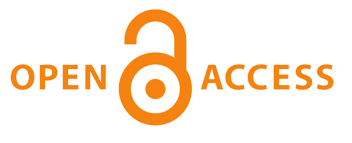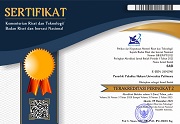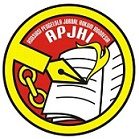Standardization and Standard Essential Patents for Public Good: Application in Automotive Industry
 ), K. D. Raju(2)
), K. D. Raju(2)
(1) Indian Institute of Technology Kharagpur, Kharagpur, India
(2) Indian Institute of Technology Kharagpur, Kharagpur, India
 Corresponding Author
Corresponding Author
Abstract
The majority of patents related to automotive safety systems are owned by a limited number of companies. Absorption and implementation of such innovations in large markets require solutions that would go beyond what is protected through exclusive means viz. patents. Taking learnings from the field of communication, wherein by implementing what is known as standard-essential patents, a horizontal deployment of a similar concept is required in other areas, most notably, automotive safety systems is necessitated. This study aims to explore the need for a practical approach to a broader technological, commercial, and social cause.
Keywords
DOI
10.47268/sasi.v27i1.402
Published
2021-03-25
How To Cite
@article{SASI402,
author = {Soumya Patra and K. Raju},
title = {Standardization and Standard Essential Patents for Public Good: Application in Automotive Industry},
journal = {SASI},
volume = {27},
number = {1},
year = {2021},
keywords = {Patents; Standards; SEP; Safety; Standard Essential Patent; Framework},
abstract = {The majority of patents related to automotive safety systems are owned by a limited number of companies. Absorption and implementation of such innovations in large markets require solutions that would go beyond what is protected through exclusive means viz. patents. Taking learnings from the field of communication, wherein by implementing what is known as standard-essential patents, a horizontal deployment of a similar concept is required in other areas, most notably, automotive safety systems is necessitated. This study aims to explore the need for a practical approach to a broader technological, commercial, and social cause.},
issn = {2614-2961}, pages = {53--60} doi = {10.47268/sasi.v27i1.402},
url = {https://fhukum.unpatti.ac.id/jurnal/sasi/article/view/402}
}
[1] Bhattacharya, Mousumi., Bhattacharya, Sharad Nath. (2008). Investigating Stationarity of the Indian GDP Using Unit Root Test', The Journal Of Army Institute Of Management Kolkata (Formerly National Institute Of Management Calcutta), VIII (2), 35-48.
[2] Bosworth, D. Scott Russell., Mangum, W., Matolo, Eric C. (2018). FRAND Commitments and Royalties for Standard Essential Patents', in Complications and Quandaries in the ICT Sector: Standard Essential Patents and Competition Issues, https://doi.org/10.1007/978-981-10-6011-3_2.
https://doi.org/10.1007/978-981-10-6011-3_2
[3] Carrier, Michael a. (2012). A Roadmap to the Smartphone Patent Wars and FRAND Licensing Licensing, CPI Antitrust Chronicle, 2 (April), 1-7. https://ssrn.com/abstract=2050743.
[4] Bharadwaj, Ravikant. (2013). Standard Setting in India: Competition Law and IP Issues, IMJ, 5 (1), 2.
[5] Geradin, Damien. (2013). The European Commission Policy Towards the Licensing of Standard-Essential Patents: Where Do We Stand?, Journal of Competition Law and Economics, 9 (4), 1125-45. https://doi.org/10.1093/joclec/nht036.
https://doi.org/10.1093/joclec/nht036
[6] Lemley, Mark A., Shapiro, Carl. (2007). Patent Holdup and Royalty Stacking, Texas Law Review, 85, https://escholarship.org/uc/item/8638s257.
[7] Piesiewicz, Grazyna., Schellingerhout, Ruben. (2007). Intellectual Property Rights in Standard Setting from a Competition Law Perspective, Competition Policy Newsletter, 3, 36-38.
[8] Pavlovic, Ana., Fragassa, Cristiano. (2015). General Considerations on Regulations and Safety Requirements for Quadricycles, International Journal for Quality Research, 9 (4), 657-674. http://www.ijqr.net/paper.php?id=373.
[9] Pohlmann, Tim Christoph., Neuhäusler, Peter., Blind, Knut. (2016). Standard Essential Patents to Boost Financial Returns. R&D Management, 46 (S2), 612-630. http://dx.doi.org/10.1111/radm.12137.
https://doi.org/10.1111/radm.12137
[10] Bureau of Indian Standards, (2010). IS 14664:2010 Automotive Vehicles -Performance Requirements and Testing Procedure for Braking System of Two and Three Wheeled Motor Vehicles.
[11] Council of the European Union, (2012), Motorcycles: New Safety and Enviromental Requirements.
[12] CMVR, (2015), Central Motor Vehicles (Fourteenth Amendment) Rules 1989, Rule 4A (Draft).
[13] European Commission, (2017), Standard Essential Patents.
[14] Global Technical Regulation, (2006). Motorcycle Brake Systems.
[15] Ganguli, (2017) Inspection & Maintenance for In-Use Vehicles in India.
[16] I Decker, S., & King, (2015). Wi-Fi Inventors' Cut of IPhone 6 Sales to Shrink in Vote.
[17] KPMG, (2017) 'The Indian Automotive Industry: Evolving Dynamics'.
[18] Lorenzo, Relatore. (2014). Stanghellini Candidato, and Niccolò Galli, 'Standard Essential Patents Litigation and Abuse of a Dominant Position: The " FRAND " Defense in the EU Competition Law Context, Universita Degli Studi Firezi, https://www.studiotorta.com/wp-content/uploads/2016/02/2016-niccolo-galli-the-frand-defense-in-the-eu.pdf.
[19] Microsoft Corp. v. Motorola Inc, 963 F.Supp.2d 1176, 2013, F.Supp.2d1, 1176.
[20] SIAM, (2019). Technical Regulation. https://www.siam.in/technical-regulation.aspx?mpgid=31&pgidtrail=34.
[21] The Office Of The Controller General and others, (2019), Annual Report 2017-2018.
| Dublin Core | PKP Metadata Items | Metadata for this Document | |
| 1. | Title | Title of document | Standardization and Standard Essential Patents for Public Good: Application in Automotive Industry |
| 2. | Creator | Author's name, affiliation, country | Soumya Prakash Patra; Indian Institute of Technology Kharagpur, Kharagpur; India |
| 2. | Creator | Author's name, affiliation, country | K. D. Raju; Indian Institute of Technology Kharagpur, Kharagpur; India |
| 3. | Subject | Discipline(s) | |
| 3. | Subject | Keyword(s) | Patents; Standards; SEP; Safety; Standard Essential Patent; Framework |
| 4. | Description | Abstract | The majority of patents related to automotive safety systems are owned by a limited number of companies. Absorption and implementation of such innovations in large markets require solutions that would go beyond what is protected through exclusive means viz. patents. Taking learnings from the field of communication, wherein by implementing what is known as standard-essential patents, a horizontal deployment of a similar concept is required in other areas, most notably, automotive safety systems is necessitated. This study aims to explore the need for a practical approach to a broader technological, commercial, and social cause. |
| 5. | Publisher | Organizing agency, location | Faculty of Law, Universitas Pattimura |
| 6. | Contributor | Sponsor(s) | |
| 7. | Date | (YYYY-MM-DD) | 2021-03-25 |
| 8. | Type | Status & genre | Peer-reviewed Article |
| 8. | Type | Type | |
| 9. | Format | File format | PDF, XML |
| 10. | Identifier | Uniform Resource Identifier | https://fhukum.unpatti.ac.id/jurnal/sasi/article/view/402 |
| 10. | Identifier | Digital Object Identifier | 10.47268/sasi.v27i1.402 |
| 11. | Source | Title; vol., no. (year) | SASI; Vol 27, No 1 (2021): Volume 27 Nomor 1, Januari - Maret 2021 |
| 12. | Language | English=en | en |
| 13. | Relation | Supp. Files | |
| 14. | Coverage | Geo-spatial location, chronological period, research sample (gender, age, etc.) | |
| 15. | Rights | Copyright and permissions | Copyright: Authors who publish their manuscripts in this Journal agree to the following conditions: 1. The copyright in each article belongs to the author, as well as the right to patent. 2. Authors can enter into separate, additional contractual arrangements for the non-exclusive distribution of the journal's published version of the work (e.g., post it to an institutional repository or publish it in a book), with an acknowledgment of its initial publication in this journal. 3. Authors are permitted and encouraged to post their work online (e.g., in institutional repositories or on their website) before and during the submission process, as it can lead to productive exchanges, as well as earlier and greater citation of published work. 4. Authors have the right to self-archiving of the article (Author Self-Archiving Policy)
License: The SASI Journal is disseminated based on the Creative Commons Attribution-NonCommercial 4.0 International license terms. This license allows anyone to copy and redistribute this material in any form or format, compose, modify, and make derivatives of this material for any purpose. You cannot use this material for commercial purposes. You must specify an appropriate name, include a link to the license, and certify that any changes have been made. You can do this in a way that is appropriate but does not imply that the licensor supports you or your use.
|
Copyright (c) 2021 Soumya Prakash Patra, K. D. Raju

This work is licensed under a Creative Commons Attribution-NonCommercial 4.0 International License.

 : 4463 times
: 4463 times Download : 1179 times
XML
Download : 1179 times
XML 















